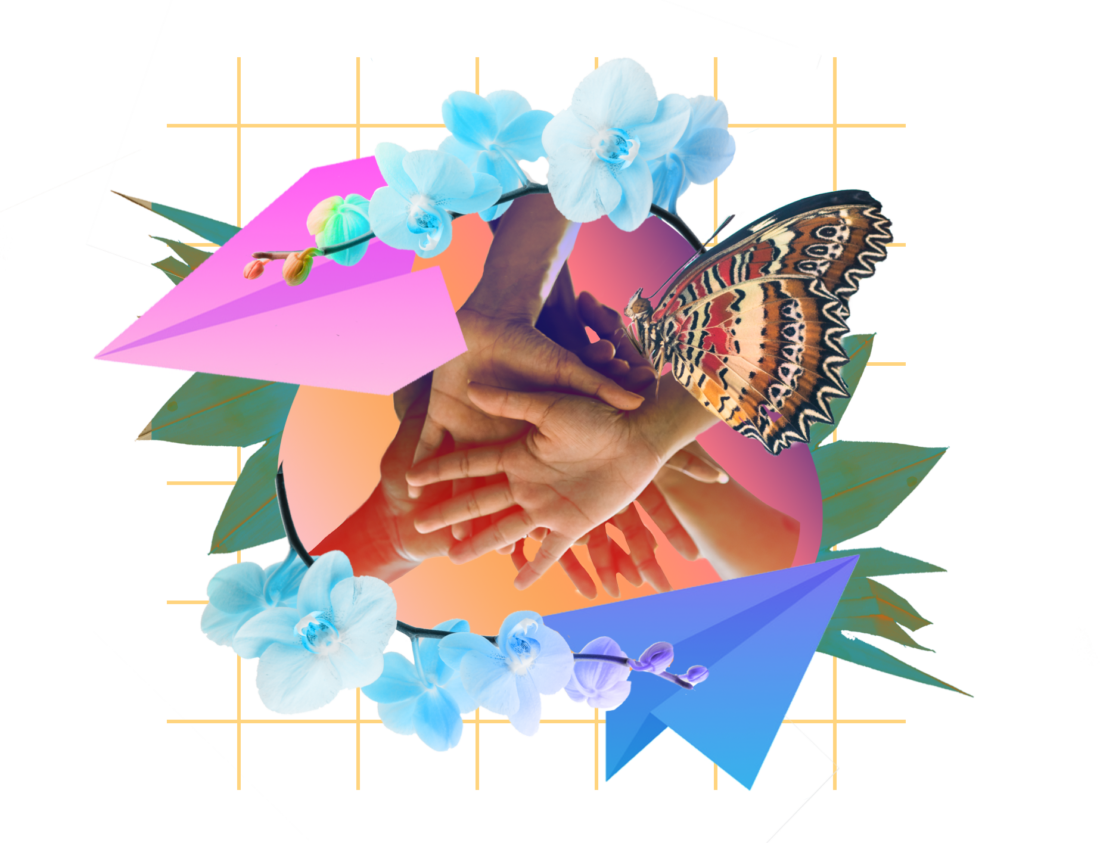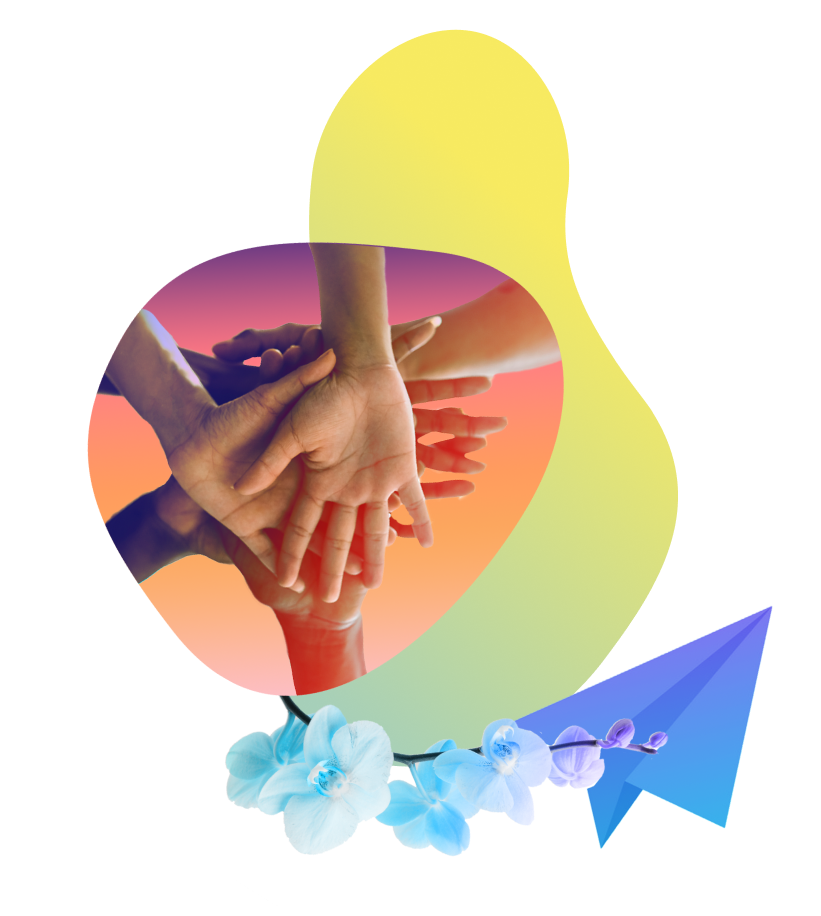Trust in philanthropy: from paper to practice
Now that you’ve committed to learning and humility, it’s important to understand how trust can lead you through every step of grantmaking and help you navigate the complexities of systems thinking.

Systems thinking can help optimize for real, lasting change
While systems thinking is a complex concept to understand and implement, this video breaks down the basics:


Trust makes systemic change possible

aim at the root causes, be adaptable, adopt a holistic approach, and be patient.

Through direct philanthropy practices, we learned that lack of trust frustrates every one of these principles.
This lighthearted video is a perfect example of that kind of fail.
So to bring the concept of trust from paper to practice (even philosophers need action steps!) we’ve mapped four “trust practices” onto the four principles of systems thinking.
Principle 1: aim at the root causes
In practice


Local leaders are uniquely positioned to understand the dynamics at play in their community. While a large aid organization might see the visible symptoms, these experts on the ground can truly see the bigger issues. So trust their knowledge of the local history, culture, and environment — and lean on it.
To go a step further, make sure that the community-based organization (CBO) you support is itself made up of community members. This isn’t just a simple checkbox question, since the idea of “local” is often nuanced, but it’s important to understand how a CBO really functions. Whose voices are part of the decision-making process? Are they placing community members in leadership roles?
This principle can be baked into your learning process from the beginning. As you get to know a local leader, you’ll be able to get a sense of how much they understand root causes, or how they’ve thought about it with their team. They will already know who the major stakeholders or gatekeepers are in their local community, even if they don’t have access to them yet — your support and resources may help them get there. Trusting the community in this way will continue to root your partnership in local context, so that you can tackle the real problems together.
In action
Principle 2: be adaptable
In practice


Flexible funding allows organizations to be more agile and respond to the ever-changing needs of their community. We’ve seen some incredible innovation come out of this approach, as local leaders are given the space to experiment. This is especially important for marginalized populations, who are already adapting to survive in the most challenging situations and regions of the world.
Additionally, flexible funding has pretty powerful long-term potential. Some funders approach grantmaking with a particular program in mind (Invest in schools! Give laptops!), but this mindset doesn’t leave room for an organization to invest resources in their own operations and capacity. In reality, research shows that restricted funds are more prone to doing harm. They often prevent nonprofits from paying salaries, for example. Granting unrestricted, “general operating” funds gives you an opportunity to meaningfully strengthen organizations themselves and contribute to their continued resilience.
"Projects supported by flexible funding are by far the most successful, and those who are implementing the projects are happy, creative and feel very empowered to be innovative in real time to adjust to the needs of the community. There are very few donors that provide this flexibility, and we are so grateful for this grant."
-Misiyah, Director of KAPAL Perempuan Institute
Giving flexible funding is a financial model centered in trust. It signals that you trust a nonprofit to decide how they spend money. It’s about getting out of the way, so that organizations can focus on their work, unburdened by administrative load or complex measurement. And instead of tasking you with micromanagement, flexible funding grounds you in the long-term mission of building movements with local communities.
In action
Principle 3: adopt a holistic approach
In practice


Look for opportunities to support multi-layered tactics, whether they’re from one organization or a group of organizations. Consider supporting an existing coalition — a group of practitioners with a similar agenda around a region or issue. A coalition can kindle new ideas and compound collective power. Just think about any professional network you’ve been a part of, where members can share knowledge, refer opportunities, and swap inspiring stories.
But it’s not just about having extra problem-solving brains. By forging a connection around a shared mission, coalitions help local leaders foster bigger-picture thinking and sustain their momentum. In other words, they’re powerful simply because they strengthen local leaders’ ability to keep doing their work, growing their resilience to weather storms together.
How do you build a coalition? Well...“you” don’t. It most often has to be driven by the community. As a grantmaker, you can help build links between people and encourage them to recognize what they’re already doing together. Once you’re actively listening and trusting your partners, you’ll slowly gain more insight about who is doing similar work in the area and help build trust with other local leaders.
In action
“The Colectivo has given staff members a (safe) space to interact and share ideas, both personal and professional, and has given WINGS Guatemala an opportunity to increase and strengthen collaboration with mission adjacent organizations.“
-Rodrigo Barillas, Executive Director of WINGS Guatemala
Asian Muslim Action Network (AMAN) approaches their mission of interfaith peace-building by uniting individuals and organizations across Asia around progressive interpretations of Islam. AMAN uses their networked structure to distribute funds to smaller groups that might not have strong fundraising skills or options. They collaborate across organizations to write collective case studies that can be shared to promote community understanding. They’re incredibly focused on supporting long-term capacity, bolstering the strength of each member organization by providing solidarity for interfaith leaders, particularly young people and women. For example, they organize social groups for women in 39 communities across seven provinces to build leadership skills.
“We believe that we need to work together with others, in particular because there are so many conflicts due to different understandings of Islam. So our work is much more about how to bring more people together — so other people can actually help the community.”
-Dwi Ruby K, Director of AMAN
She’s the First brings together girls’ rights practitioners from around the globe. They facilitate flexible funding, trainings, and networking to share best practices and strengthen the ecosystem of girls’ organizations.
“We learned from our partners that the best way to improve outcomes for girls was to equip their teams with opportunities to learn from one another, and to provide training in specific areas of need. This is how systemic change happens: by listening to one another and then changing the system together.”
-Christen Brandt, Co-founder of She’s the First
Segal Family Foundation encourages collaboration among their own cohort of local partners, providing networking opportunities like workshops and a fellowship program. This culminates in their annual conference, where the focus is connection. They also offer grants for partner site visits, giving leaders the funding and logistical support to learn directly from each other.
“Partners are really effective at supporting one another. We see it all the time — they collaborate, ask questions, refer each other to funders, and are incredible advocates.”
- Cher-Wen DeWitt, Director of Partnerships, Segal Family Foundation
Principle 4: be patient
In practice
A multi-year grant tells a local leader that you trust them, their methods, and their potential for growth over time. It’s also a great reminder that grantmaking is most effective and meaningful when it’s a partnership: You don’t need to be part of every nitty-gritty operational decision if you’re a long-term partner.
You should go into a grantmaking initiative knowing that you’re in it for the long haul — at minimum 2-3 years, and ideally closer to 10 years.
Wait, I have to commit to 10 years?!?
Pause, deep breath, come back to that trusty idea of patience.
This is a huge opportunity to invest in the movement leaders that are already doing this work, helping them to iterate and celebrating successes along the way. They need resources to be able to continue doing it for many more years to come.
In action
Start putting these principles into practice
Take an issue you care about — maybe it’s from your own community or something new — and apply the four principles of systems thinking above. What kind of questions could you be asking? What approaches could you try? Develop a sample action list based on the solutions above.
Get practice with forming coalitions by starting with other funders. Who can you learn from? What can you share? What can you build together? Make a list of names and start emailing to build a new network of grantmakers.



Sign up for our lightweight newsletter
News, events and resources for equitable philanthropy